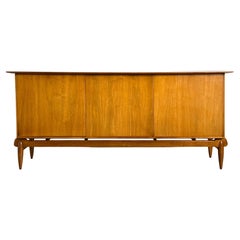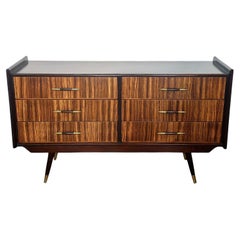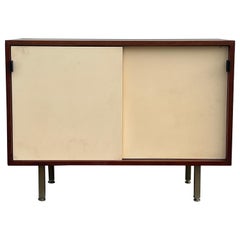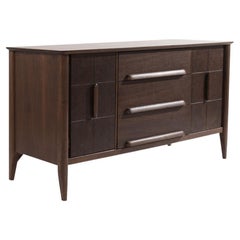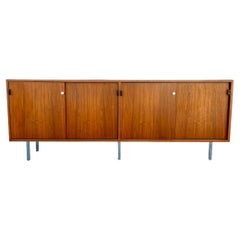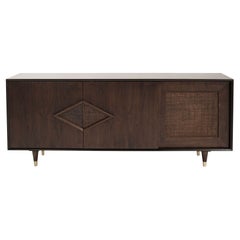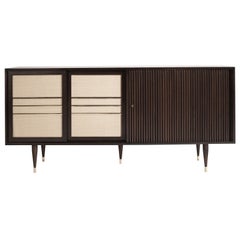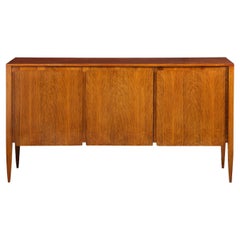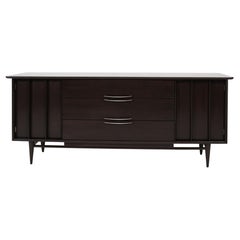Walnut 1950s Credenza
Vintage 1950s American Mid-Century Modern Credenzas
Walnut
Vintage 1950s Italian Credenzas
Brass
Vintage 1950s American Mid-Century Modern Credenzas
Wood
Mid-20th Century American Mid-Century Modern Credenzas
Walnut
Vintage 1950s American Mid-Century Modern Credenzas
Chrome
Mid-20th Century American Mid-Century Modern Credenzas
Brass
Mid-20th Century American Mid-Century Modern Credenzas
Brass
Vintage 1950s American Mid-Century Modern Credenzas
Walnut
Mid-20th Century American Mid-Century Modern Credenzas
Steel
Vintage 1950s American Modern Credenzas
Steel
Mid-20th Century American Mid-Century Modern Credenzas
Brass
Vintage 1950s Italian Credenzas
Brass
Vintage 1950s Italian Mid-Century Modern Credenzas
Brass
Vintage 1950s American Mid-Century Modern Credenzas
Walnut
Vintage 1950s Dutch Mid-Century Modern Credenzas
Walnut
Vintage 1950s American Modern Credenzas
Aluminum
Vintage 1950s American Modern Credenzas
Steel
Mid-20th Century Spanish Spanish Colonial Credenzas
Walnut
Vintage 1950s Belgian Mid-Century Modern Credenzas
Cherry, Walnut
Vintage 1950s Italian Mid-Century Modern Credenzas
Maple, Glass, Mirror, Walnut
20th Century French Mid-Century Modern Credenzas
Brass
Mid-20th Century American Mid-Century Modern Dressers
Walnut
Mid-20th Century English Regency Cabinets
Metal
Vintage 1950s Italian Mid-Century Modern Cabinets
Brass
Mid-20th Century American Mid-Century Modern Credenzas
Walnut
Vintage 1960s American Mid-Century Modern Credenzas
Iron
Vintage 1950s Czech Art Deco Credenzas
Walnut
Vintage 1940s Italian Louis XVI Credenzas
Walnut, Rosewood
Vintage 1950s American Mid-Century Modern Credenzas
Walnut
Vintage 1950s Credenzas
Walnut
Vintage 1950s American Credenzas
Walnut
Mid-20th Century Mid-Century Modern Credenzas
Leather, Cane, Walnut
Vintage 1950s American Mid-Century Modern Credenzas
Reed, Birdseye Maple, Walnut
Vintage 1950s Mid-Century Modern Credenzas
Brass
Vintage 1950s Italian Mid-Century Modern Credenzas
Walnut
Vintage 1950s American Mid-Century Modern Credenzas
Walnut, Leather, Cane
Mid-20th Century Danish Scandinavian Modern Credenzas
Teak, Walnut
Mid-20th Century American Mid-Century Modern Credenzas
Nickel
20th Century American Mid-Century Modern Credenzas
Brass
Vintage 1950s Scandinavian Modern Credenzas
Vintage 1950s Mid-Century Modern Credenzas
Wood
Vintage 1950s Mid-Century Modern Credenzas
Mid-20th Century American Mid-Century Modern Credenzas
Brass
Vintage 1950s American Mid-Century Modern Credenzas
Steel
Vintage 1950s Mid-Century Modern Credenzas
Walnut
Vintage 1950s American Mid-Century Modern Credenzas
Brass
Vintage 1950s American Mid-Century Modern Credenzas
Aluminum, Brass
Vintage 1950s Mid-Century Modern Credenzas
Iron
Vintage 1950s Italian Credenzas
Brass
Vintage 1950s American Credenzas
Cane, Walnut
Vintage 1950s American Mid-Century Modern Credenzas
Walnut
Vintage 1950s American Mid-Century Modern Credenzas
Walnut
Vintage 1950s American Mid-Century Modern Credenzas
Aluminum
Vintage 1950s American Mid-Century Modern Credenzas
Iron
Vintage 1950s American Mid-Century Modern Credenzas
Walnut
Mid-20th Century Italian Mid-Century Modern Credenzas
Brass
Vintage 1950s American Mid-Century Modern Credenzas
Brass
Vintage 1950s American Credenzas
Brass
- 1
Walnut 1950s Credenza For Sale on 1stDibs
How Much is a Walnut 1950s Credenza?
Finding the Right Storage-case-pieces for You
Of all the vintage storage cabinets and antique case pieces that have become popular in modern interiors over the years, dressers, credenzas and cabinets have long been home staples, perfect for routine storage or protection of personal items.
In the mid-19th century, cabinetmakers would mimic styles originating in the Louis XIV, Louis XV and Louis XVI eras for their dressers, bookshelves and other structures, and, later, simpler, streamlined wood designs allowed these “case pieces” or “case goods” — any furnishing that is unupholstered and has some semblance of a storage component — to blend into the background of any interior.
Mid-century modern furniture enthusiasts will cite the tall modular wall units crafted in teak and other sought-after woods of the era by the likes of George Nelson, Poul Cadovius and Finn Juhl. For these highly customizable furnishings, designers of the day delivered an alternative to big, heavy bookcases by considering the use of space — and, in particular, walls — in new and innovative ways. Mid-century modern credenzas, which, long and low, evolved from tables that were built as early as the 14th century in Italy, typically have no legs or very short legs and have grown in popularity as an alluring storage option over time.
Although the name immediately invokes images of clothing, dressers were initially created in Europe for a much different purpose. This furnishing was initially a flat-surfaced, low-profile side table equipped with a few drawers — a common fixture used to dress and prepare meats in English kitchens throughout the Tudor period. The drawers served as perfect utensil storage. It wasn’t until the design made its way to North America that it became enlarged and equipped with enough space to hold clothing and cosmetics. The very history of case pieces is a testament to their versatility and well-earned place in any room.
In the spirit of positioning your case goods center stage, decluttering can now be design-minded.
A contemporary case piece with open shelving and painted wood details can prove functional as a storage unit as easily as it can a room divider. Alternatively, apothecary cabinets are charming case goods similar in size to early dressers or commodes but with uniquely sized shelving and (often numerous) drawers.
Whether you’re seeking a playful sideboard that features colored glass and metal details, an antique Italian hand-carved storage cabinet or a glass-door vitrine to store and show off your collectibles, there are options for you on 1stDibs.
- 1stDibs ExpertApril 5, 2022Yes. While the gem has always been a mainstay in jewelry, there was a boom in demand for pearl pieces in the 1950s. The style at the time was black-and-white-chic, and pearls were an excellent accompaniment to pieces like the classic little black dress. Shop a collection of expertly vetted pearl jewelry from some of the world’s top sellers on 1stDibs.
- What is 1950s furniture called?1 Answer1stDibs ExpertSeptember 23, 20241950s furniture is called vintage furniture. Some pieces produced during this period may be considered mid-century modern based on their characteristics. Mid-century modern design refers to the variety of modernism that rose to prominence in the 1940s and ’50s. It displays many of the characteristics of the earlier versions of modernism, including simple forms and a focus on functionality. Other traits common in mid-century modern furniture include unadorned silhouettes, clean lines and mixed materials, emphasizing wood, wool, steel and plastic. On 1stDibs, explore a large collection of 1950s furniture.
- 1stDibs ExpertJune 30, 2023Some popular watches for men during the 1950s were the Rolex Submariner, the Enicar Sherpa Dive, the Breitling Navitimer, Omega, Constellation and the Rolex GMT-Master. Rolex, Timex, Orvin, Tower and Elgin were among the top watchmakers for women during the decade. On 1stDibs, find a collection of antique, vintage and contemporary watches.
- 1stDibs ExpertFebruary 21, 2024The clothing style in the 1950s was well tailored and classic. For women, dresses with padded busts, cinched waists and hips, and full circle skirts were popular, and the collared button-up shirt dress came into fashion during the decade. Men tended to wear suits in neutral gray, dark blue and brown colors made out of easy-to-care-for synthetic fabrics. Straight-cut double-breasted blazers were commonly worn for casual occasions. On 1stDibs, explore a variety of vintage clothing from the 1950s.
- 1stDibs ExpertNovember 21, 2023In the 1950s, several diamond cuts were popular. They included the brilliant round cut, the Asscher cut, the emerald cut and the marquise cut. Rings that featured a large central stone flanked by smaller baguettes were also trendy during the decade. Find a collection of vintage diamond jewelry on 1stDibs.
- 1stDibs ExpertNovember 27, 2023In the 1950s, a Chanel bag was priced between $200 and $300. The iconic Chanel 2.55 bag cost $220 when first introduced in February 1955. Accounting for inflation, that works out to around $2,536 in today's money. On 1stDibs, find a diverse assortment of Chanel bags from some of the world's top boutiques.
- 1stDibs ExpertNovember 6, 2023There were a few popular diamond cuts in the 1950s. One was the brilliant round cut, which is still common today due to its simple shape and prominent sparkle. Other favorite cuts of the decade included the Asscher cut, the emerald cut and the marquise cut. On 1stDibs, explore a large selection of engagement rings.
- 1stDibs ExpertNovember 13, 2024The best-known 1950s furniture style is called mid-century modern. Organically shaped, clean-lined and elegantly simple are three phrases that describe vintage mid-century modern furniture. The style emerged primarily in the years following World War II through creators who believed that good design was an essential part of good living. Mid-century modern designers combined natural and human-made materials, such as teak, rosewood and oak woods as well as steel, fiberglass and molded plywood. Some well-known mid-century modern designers include Charles and Ray Eames, Eero Saarinen, Milo Baughman, Florence Knoll, Harry Bertoia, Isamu Noguchi and George Nelson. On 1stDibs, shop a large selection of mid-century modern furniture.
- Which artist became famous for his series of black paintings in the late 1950s and early 1960s?1 Answer1stDibs ExpertJanuary 27, 2025Frank Stella is the artist who became famous for his series of black paintings in the late 1950s and early 1960s. These works featured bands of black paint separated by thin, precise stripes of bare canvas. At a time when contemporary painting was all about wild gestures, thick paint and formal abandon, the “Black Paintings” created a sensation. Explore a range of Frank Stella art on 1stDibs.
